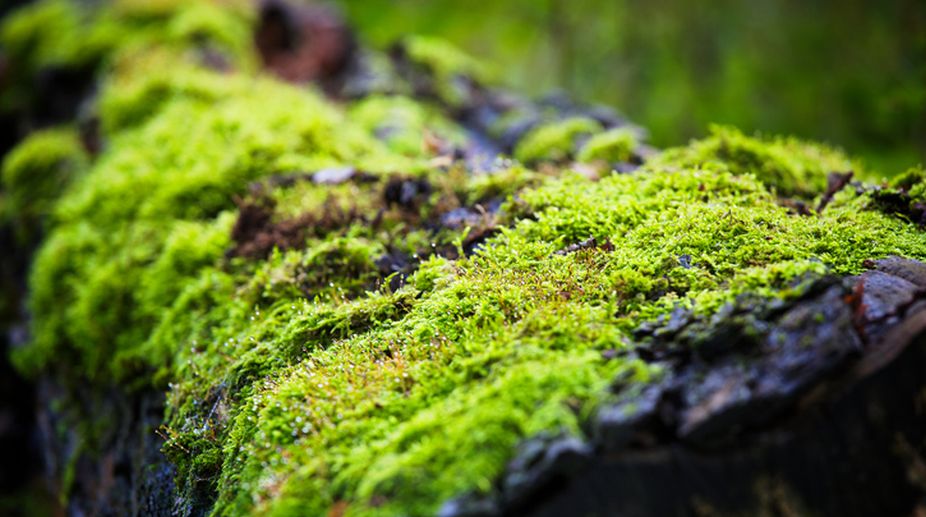Doctors in Delhi carry out rare total hip and knee surgeries with robotic assistance
Robotic-assisted surgery was chosen by the medical staff of Indraprastha Apollo Hospitals in Delhi because of its accuracy and little invasiveness

Moss (GETTY IMAGES)
And when thou art weary I’ll find thee a bed, of mosses and flowers to pillow thy head.” These words by the English Romantic poet, John Keats (1795-1821), articulate that even the humble moss can comfort the weary. There is much to be imbibed from this plant and indeed, moss has its own place in history, from the time of World War I.
Moss are small flowerless plants that grow in dense green clumps, often in shaded or damp locations. Individually they are composed of simple leaves and generally are only one cell thick, attached to a slender stem. Their ability to conduct water or nutrients is limited. Interestingly, mosses do not have seeds and after fertilization, they develop sporophytes with unbranched stalks and single capsules, containing spores. They grow to about two to 10 cm tall and the tallest species in the world, Dawsonia, grows to a height of 50 cm.
There are common names with the word moss, such as reindeer moss or Iceland moss, but these species are not related to moss, despite the word moss in the name. In botanical terms, mosses are classified on their own, as the division Bryophyta and comprise about 12,000 species. Most mosses depend on the wind to disperse their spores. There is a species, Ulota phyllantha, in which green vegetative structures, called gemmae, are produced on leaves and branches, which can snap off to form new moss, without the need to go through the cycle of fertilisation and is thus a means of asexual reproduction. Moss, a plant that lives in an unobtrusive way, all of a sudden, became a pioneer in the field of medical history — it gave hope to thousands of soldiers, during World War I, and signified that a miracle had arrived to save them from their festering injuries.
Advertisement
When World War I began, wounds of injured soldiers deteriorated and towards 1914, W Watson Cheyne of The Royal College of Surgeons, England, viewed with horror, the prevalence of sepsis. His dispatches, by the end of 1915, contained warnings that thousands of wounded soldiers were desperately in need of additional bandages, which were running out. Medical experts had one option within these distressing circumstances and that was to come up with creative solutions. They dabbed wounds with chlorine solutions, bandages were mixed with carbolic acid, formaldehyde, also known by its systematic name —methanal, and even mercury chloride, a chemical compound of mercury and chlorine, were used. Doctors used whatever their brains commanded them to try, rather than watch a human being die, because there was insufficient material to keep wounds covered and protected against infection. The severity of the situation was exacerbated by the dwindling supplies of cotton, due to the demand of its use for clothes and explosives. Humanity enunciated its preference for wealth, not its concern for soldiers who succumbed to infection of wounds, and “whose names lasted only as long as their wives and children lived,” as articulated by Michel de Montaigne, on the plight of soldiers throughout history.
What were the Allied Powers of World War I to do? Issac Bayley Balfour, both a surgeon and botanist, virtually stumbled upon an idea, when walking through the woods. His understanding of moss gave him a brilliant idea — pack moss into wounds. Moss thrived in cold and damp places of the British Isles. Humans know about moss in horticulture and its use in bio-fuel. But mankind has also used moss, for nearly 1,000 years, apparently to heal wounds. Moss was used during the Napoleonic wars and Irish sources write of the Battle of Clontarf in 1014, at Clontarf near Dublin, when moss was successfully used for wounded soldiers.
It was these studies in history related to moss, that inspired Charles Walker Cathcart to identify two species of moss that was efficient for staunching bleeding: S paillosum and S palustre, both of which thrived in the British Isles. After a narrative on the subject was published in The Scotsman, it was realised that moss was already being used by the enemy, Germany. A hilarious and classic case of one country learning from another, notwithstanding they were enemies!
Robin Kimmerer, professor of ecology, writes in his book, Gathering Moss: A Natural and Cultural History of Mosses, “90 per cent cells in a Sphagnum plant are dead.” This is nature’s way of ensuring that the cells being dead are empty so they can be filled with liquid. Humanity has taken advantage of this quality for moss to soak in blood, pus and body fluids. Kimmerer asserts that the plant is also endowed with antiseptic properties. The incredible history of moss continued during World War I, when the Canadian Red Cross Society, Ontario, provided over a million dressings and pads for wounded soldiers. They collected moss from British Colombia and Nova Scotia. By 1918, Britain dispatched one million such dressings every month to countries as far away as Egypt and Mesopotamia. Countries conducted local “moss drives”, at a time when patriotism revolved around just one word — moss.
Advertisement